Beginner's Guide: What is a Chinchilla?
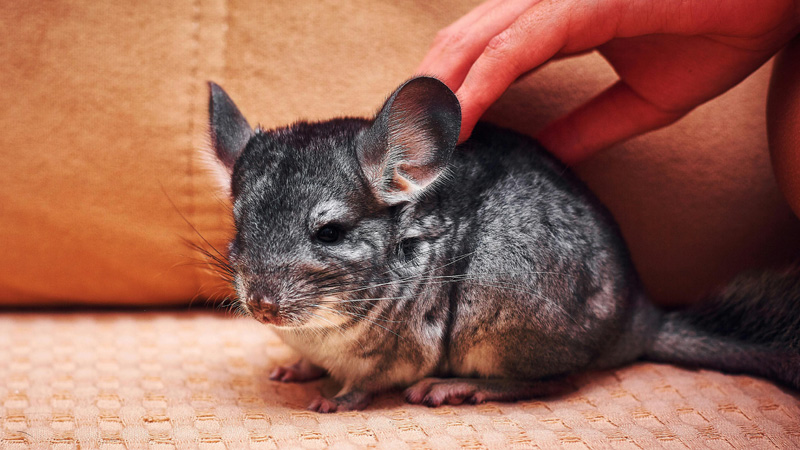
Photo by Bulat Khamitov on Unsplash
Embarking on the journey of pet ownership can be both exciting and daunting, especially for beginners. Among the plethora of options, one creature stands out for its unique charm and endearing qualities - the chinchilla. These small, fluffy creatures have captured the hearts of many animal lovers with their soft fur, playful antics, and charming personalities.
But what exactly is a chinchilla, and what do you need to know before bringing one into your home?
In this beginner's guide, we'll delve into the fascinating world of chinchillas, exploring their origins, characteristics, care requirements, and what it takes to be a responsible chinchilla owner.
Origins and Natural Habitat
Chinchillas are small rodents native to the Andes Mountains in South America, specifically found in countries like Bolivia, Chile, Peru, and Argentina. There are two main species of chinchillas: the long-tailed chinchilla (Chinchilla lanigera) and the short-tailed or lesser chinchilla (Chinchilla chinchilla). The long-tailed chinchilla is the most commonly found in captivity and is the species kept as pets.
In their natural habitat, chinchillas live in rocky, mountainous regions where they have adapted to the cold, dry climate. They are excellent jumpers, climbers, and burrowers, utilizing these skills to navigate their environment and evade predators. Chinchillas are crepuscular animals, meaning they are most active during dawn and dusk when the light is low, allowing them to forage for food and engage in social behaviors.
Average Lifespan of Chinchillas
In the wild, chinchillas have a lifespan of around 10-15 years. However, with proper care and attention, chinchillas can live even longer in captivity.
On average, chinchillas kept as pets can live anywhere between 10 to 20 years. This extended lifespan is due to the absence of predators, proper nutrition, and veterinary care. Some chinchillas have been known to live into their twenties, becoming beloved companions for many years.
Physical Characteristics
Chinchillas have several remarkable physical characteristics that make them unique among rodents. Let’s explore these features in detail:
Size: Chinchillas are small mammals, measuring between 9 to 15 inches (23-38 cm) in length, excluding their bushy tail. The tail itself can add an additional 5 to 6 inches (13-15 cm) to their overall measurement. In terms of weight, adult chinchillas typically range between 1-2 pounds (0.5-1 kg).
Fur: Chinchillas are renowned for their luxurious fur, which is incredibly soft and dense. The fur consists of thousands of fine hairs per follicle, contributing to its velvety texture. Chinchilla fur comes in various colors, including gray, white, beige, ebony, and black velvet. Additionally, some rare genetic mutations produce fur colors like violet, sapphire, or mosaic.
Ears and Eyes: Chinchillas have large, rounded ears that are sensitive to sound. Their exceptional hearing helps them remain alert to their surroundings and detect potential predators. Their eyes are also large and positioned on the sides of their head, providing them with a wide field of vision, allowing them to spot movement easily.
Teeth: Like all rodents, chinchillas possess continuously growing teeth. Their incisors are sharp and used for gnawing on various materials, including wood chew toys, to keep their teeth properly worn down and prevent overgrowth.
Behavior and Habitat
Chinchillas display intriguing behaviors and have adapted to their mountainous habitat. Understanding their behavior allows us to provide suitable care in captivity. Here are some notable aspects of chinchilla behavior:
Nocturnal and Crepuscular Habits: Chinchillas are primarily crepuscular, meaning they are most active during dawn and dusk. In their natural habitat, they utilize the subdued light of these periods to forage for food and engage in social behaviors.
Dust Bathing: Chinchillas have a unique method of keeping their fur clean. Rather than taking traditional water baths, they take dust baths. This involves rolling and flipping in fine volcanic dust or specially made chinchilla dust, which helps absorb excess oils and moisture while maintaining their fur’s insulating properties.
Jumping and Climbing: Chinchillas are incredible jumpers and climbers, reflecting their natural habitat. In the wild, they navigate rocky terrain, leaping from one surface to another with impressive agility. In captivity, providing opportunities for climbing and jumping exercises their muscles and satisfies their natural instincts.
Burrowing: Chinchillas are excellent burrowers. They create tunnels and burrows in the ground, serving as protection from predators and as a means of regulating their body temperature. Providing hiding spots and tunnels in their enclosure mimics this behavior and gives them a sense of security.
Diet and Nutrition
Chinchillas are herbivores, meaning their diet consists entirely of plant material. In the wild, they feed on a variety of grasses, leaves, bark, and plant stems. In captivity, it’s essential to replicate their natural diet to ensure they receive the necessary nutrients. Here's an overview of a chinchilla’s dietary needs:
Hay: Grass hay, such as Timothy hay, forms the basis of a chinchilla’s diet. It should be available at all times and make up the majority of their food intake. Timothy hay provides essential fiber, aids in dental health, and aids digestion.
Pellets: Chinchilla pellets are available commercially and provide additional nutrition to support their overall health. These pellets are specifically formulated for chinchillas and help ensure they receive essential vitamins, minerals, and balanced nutrition.
Fresh Vegetables: In addition to hay and pellets, chinchillas can also enjoy small portions of fresh vegetables as treats. Vegetables such as kale, spinach, carrots, and broccoli can be offered in moderation to supplement their diet.
Limited Treats: Chinchillas have sensitive digestive systems and should be given treats sparingly. Small portions of dried fruits, such as raisins or dried apple slices, can be provided occasionally as a special treat.
Caring for Chinchillas as Pets
Chinchillas can make wonderful pets for dedicated and responsible owners. If you are considering bringing a chinchilla into your home, here are some essential factors to consider:
Suitable Enclosure: Chinchillas require a spacious and vertically-oriented cage to accommodate their active nature. Consider a multi-level cage with secure bars or wire mesh that prevents them from escaping or becoming stuck. The enclosure should have appropriate hiding spots, platforms, and tunnels for climbing and exploring.
Environmental Considerations: Chinchilla cages should be placed in a quiet area of your home, away from direct sunlight and drafts. The ideal temperature for chinchillas ranges from 60-70°F (15-21°C), so avoid exposing them to extreme heat or cold.
Exercise and Stimulation: Chinchillas need regular exercise and mental stimulation to stay healthy and happy. Provide supervised time outside of the cage in a safe, chinchilla-proofed area where they can exercise and explore. Introduce toys, such as wooden blocks or tunnels, to engage their curiosity and prevent boredom.
Veterinary Care: Chinchillas require regular veterinary check-ups to ensure they are in good health. Find a veterinarian experienced in exotic animals and schedule routine visits. These visits will include dental checks, vaccinations if required, and preventive measures against common chinchilla illnesses.
Hygiene and Cleanliness: Maintaining a clean living environment is crucial for a chinchilla’s health. Regularly clean their cage, removing soiled bedding and providing fresh bedding materials. Provide a dust bath for them at least once a week to keep their fur clean and healthy.
Socialization and Bonding: Chinchillas are social animals, and they thrive on human interaction and companionship. Spend time bonding with your chinchilla through gentle handling, talking to them, and providing opportunities for play and enrichment. If feasible, consider adopting a pair of chinchillas to prevent loneliness and provide each other with companionship.
In conclusion, Chinchillas can make fantastic pets for both beginner and experienced pet owners. Their unique characteristics, such as their soft fur and playful nature, make them interesting and enjoyable companions. However, it's important to keep in mind that chinchillas have specific care requirements, so it's essential to do thorough research and be prepared to provide them with a suitable environment, proper diet, and regular veterinary care.
You May Also Like
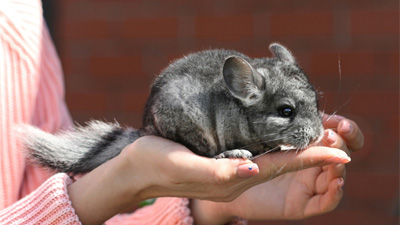 Other PetsTop 30 Unique Chinchilla Names
Other PetsTop 30 Unique Chinchilla Names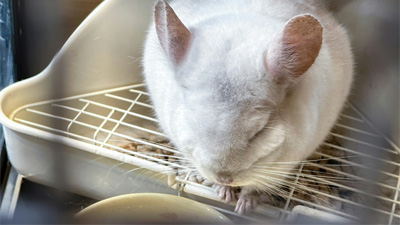 Other PetsHow Do Chinchillas Bathe in the Wild?
Other PetsHow Do Chinchillas Bathe in the Wild?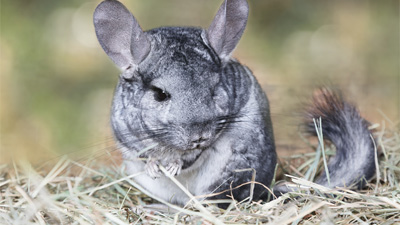 Other Pets7 Ways Chinchillas Use to Protect Themselves in the Wild
Other Pets7 Ways Chinchillas Use to Protect Themselves in the Wild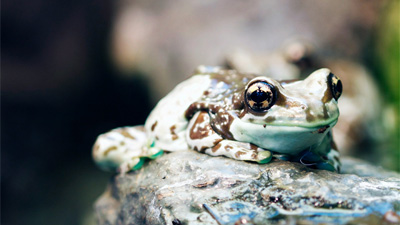 Help & AdviceExploring 10 Easiest Exotic Pets to Take Care Of
Help & AdviceExploring 10 Easiest Exotic Pets to Take Care Of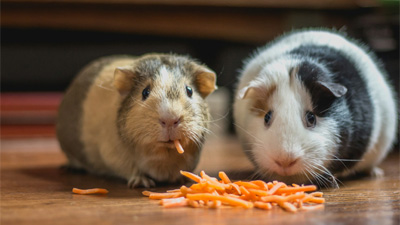 Help & AdviceThese 5 Types of Small Pets Like To Cuddle
Help & AdviceThese 5 Types of Small Pets Like To Cuddle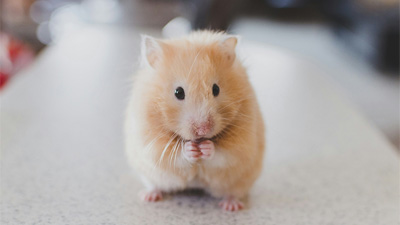 Pet HamsterWhat is the Most Common Type of Hamster?
Pet HamsterWhat is the Most Common Type of Hamster?